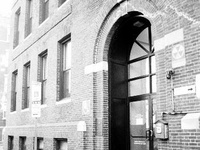Indeed, the ballot order did change in the recount as officials found some ballots that had previously been considered invalid. Some voters had tried to erase or reorder votes and others had listed numbers instead of filling in the bubbles on the ballots.
Electronic scanners could not read those ballots and so they were not included in the initial count. But later during the recount, election officials used human counters to examine the ballots and determine the voters’ intent.
Adding these ballots to the pile meant a different order and a different outcome.
In the end, the same six candidates ended up on the school committee as those declared in the initial count, but they ended up coming in different places out of the field of candidates. The second time around, committee member Alfred B. Fantini came in number one out of all the candidates—where in the initial count he had been lower in the final rankings.
This long process of recreating the initial order in which ballots had been counted on election day took more than 2,000 hours of work by 22 counters hired just for that purpose.
Election commissioner Wayne A. “Rusty” Drugan said the recount’s expensive price tag was “inevitable,” due to the number of staffers and the amount of time necessary for such a labor-intensive process.
“That’s the nature of the beast when it has to be a manual count of 20,000 ballots,” Drugan said.
A System All Its Own
While election commissioners say there is some prospect of minor tinkering with the system, they say no major overhaul is planned.
The origins of the Cambridge system date to 1938 and to a now-repealed state law. Any major modifications would require state legislative approval, and Cambridge officials say they have no plans to pursue legislative action.
In fact, Cambridge officials have had no communication with either the secretary of state’s office or the state legislature.
“We haven’t done anything since then,” said Teresa S. Neighbor, executive director of the election commission.
A spokesperson for Secretary of State William F. Galvin said he had heard of no criticisms of Cambridge’s voting system.
Cambridge’s proportional representation (PR) is part of the “Plan E” charter that sets out the city government. Plan E is one of five possible town charter systems that the state legislature established in the late ’30s. The law requires that whatever voting system Plan E cities follow was in use in 1938, the year the state enacted the legislation.
Other Plan E cities such as Lowell, Worcester, and Medford have since gotten rid of the PR aspect of the charter—leaving Cambridge as the only city in America with PR.
Read more in News
Conservative Activist Pulls for Permanent Tax Cuts













